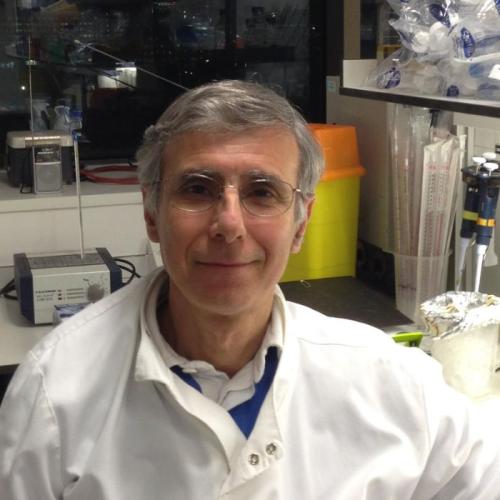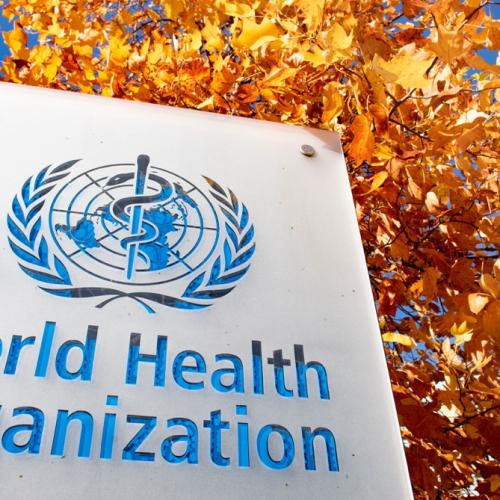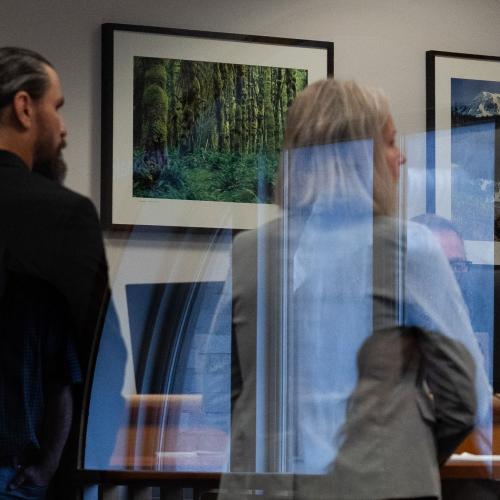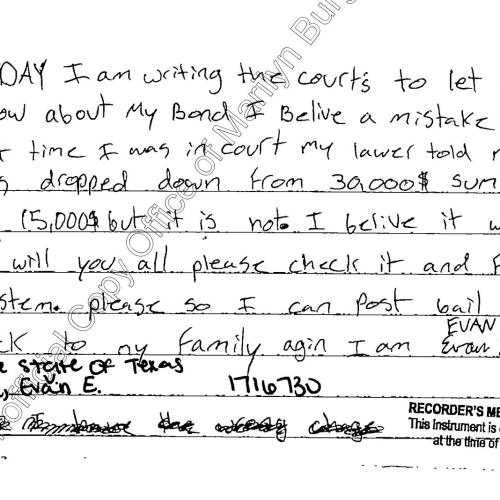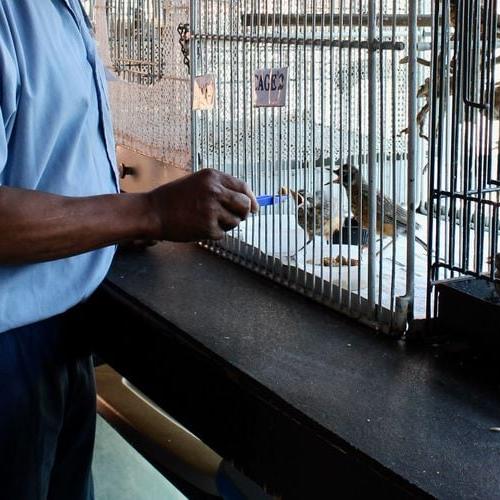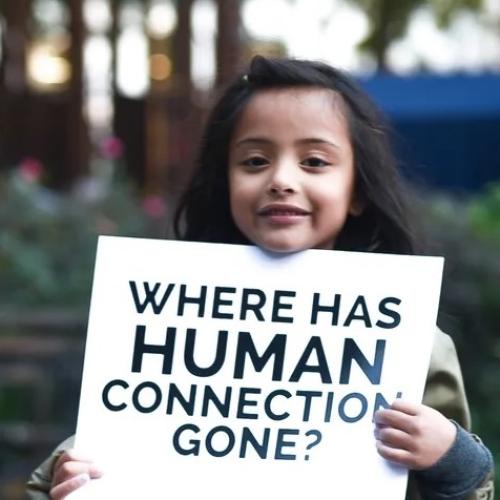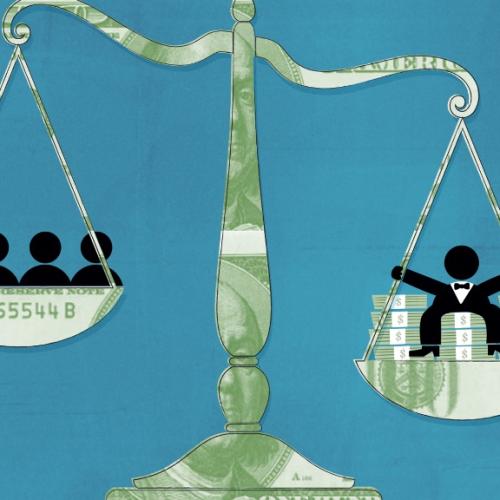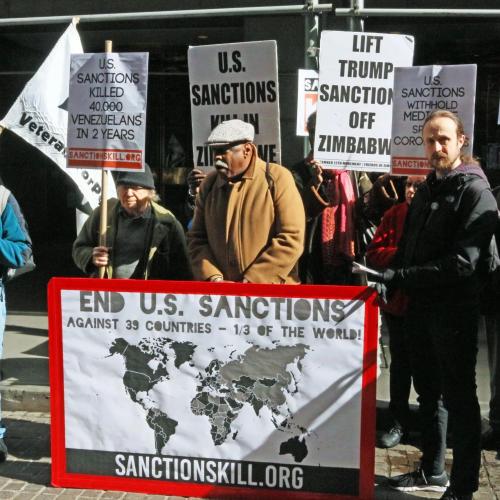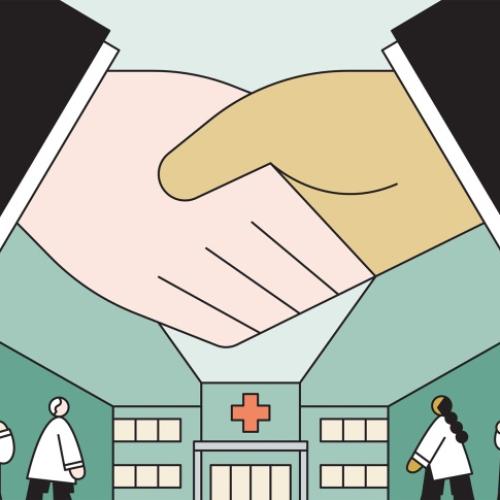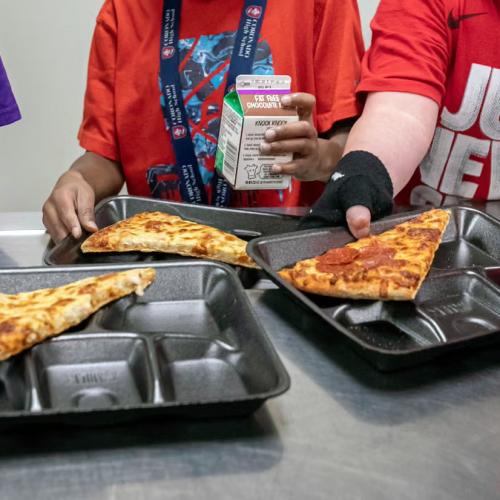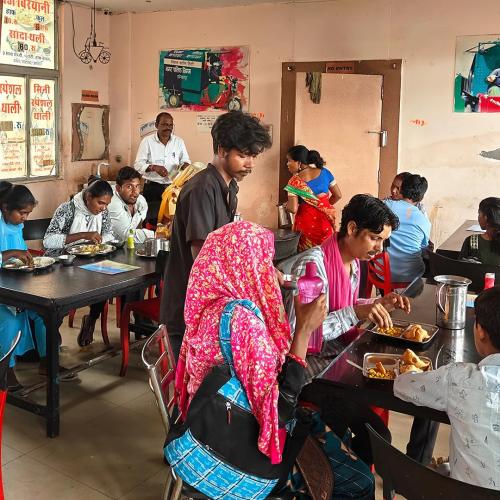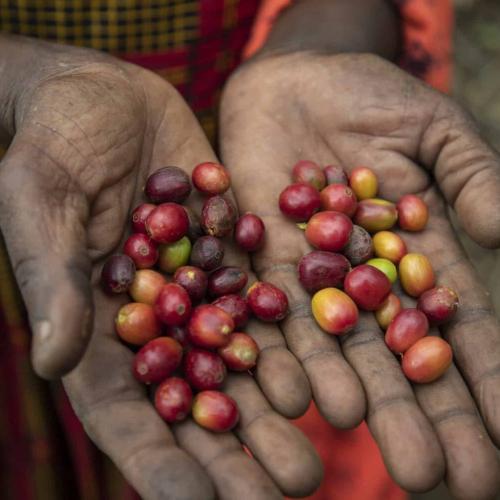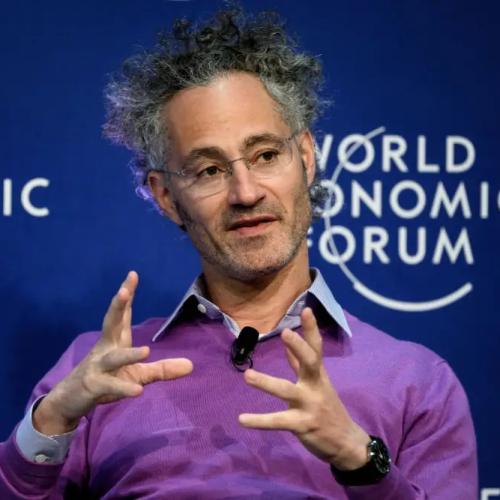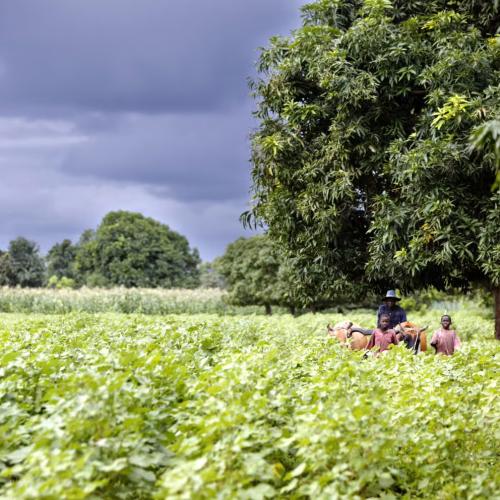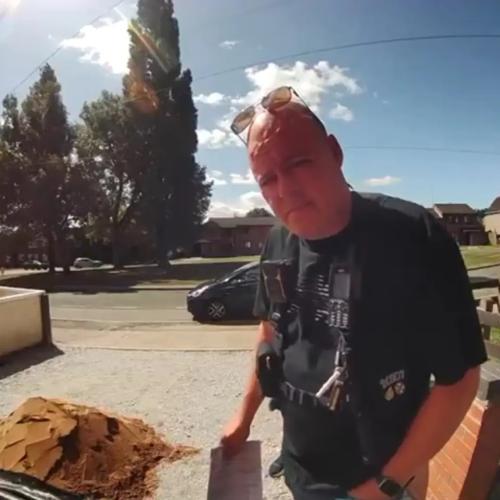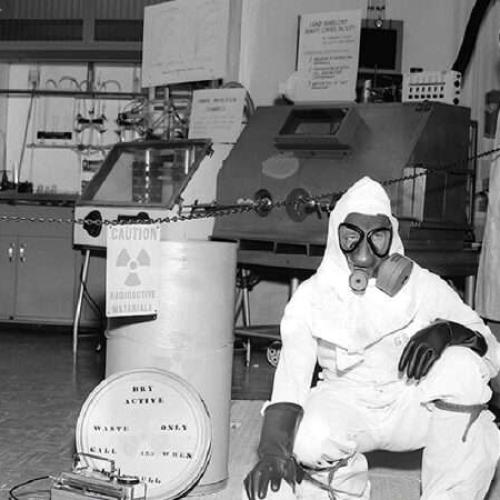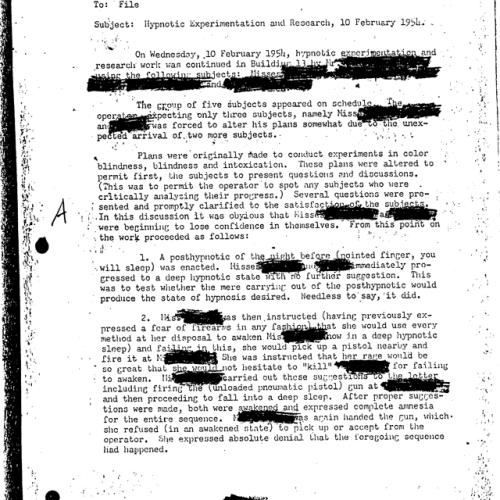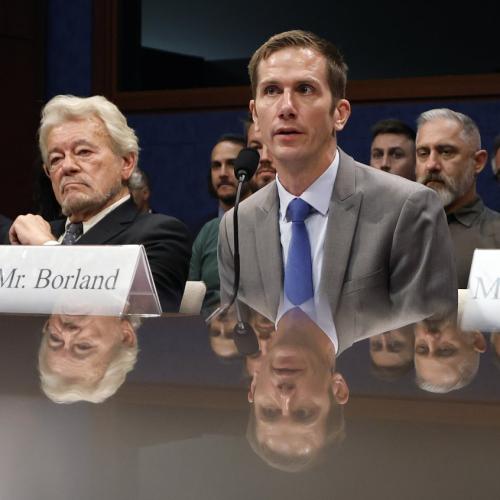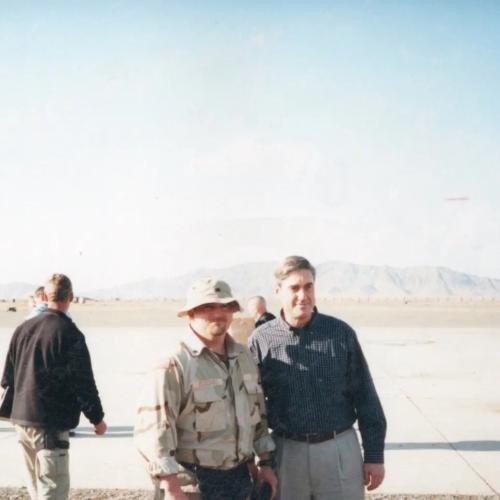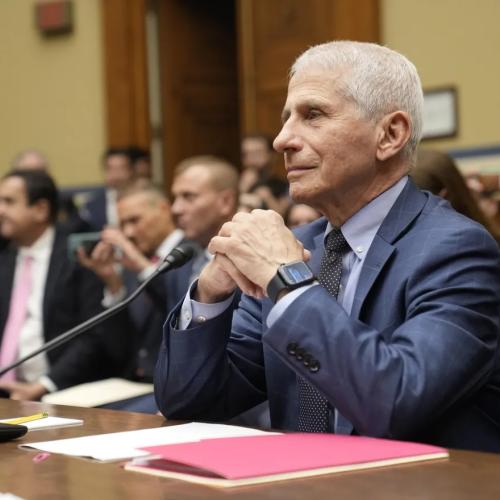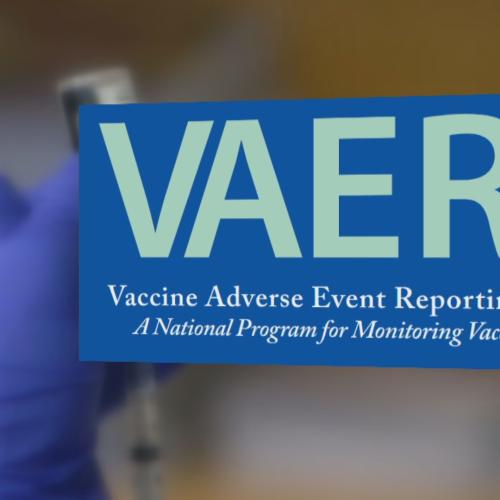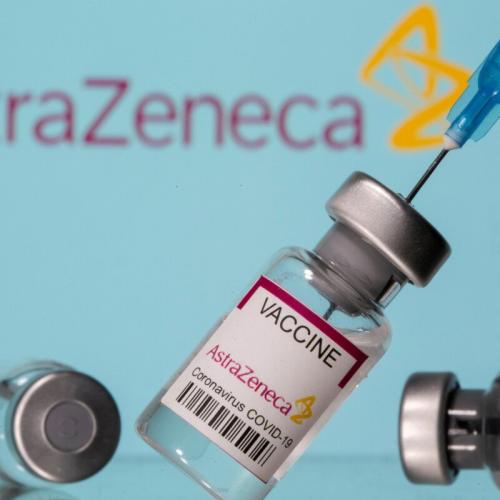Inspirational News Articles
Below are key excerpts of some of the most inspiring news articles from reliable news media sources. If any link fails to function, a paywall blocks full access, or the article is no longer available, try these digital tools.
For further exploration, delve into our Inspiration Center.
A professional diver has revealed how she uses a little known technique to placate sharks so she can remove hooks from their mouths. Italian-born Cristina Zenato, 47, who is known as 'the shark dancer' is often filmed on the ocean floor with 8ft sharks playing around her and nestling into her knees. The conservationist, who lives on Grand Bahama, has perfected the technique of relaxing the sharks, which is part of her efforts to save them by removing hooks that are caught in their fins. She induces the 'tonic' state in the shark using a little-known technique of rubbing the ampullae of Lorenzini - the name given to hundreds of jelly-filled pores around the animal's nose and mouth. A 'tonic' state is where a shark enters a natural state of paralysis, often by being turned upside down, for up to 15 minutes. The pores act as electroreceptors detecting prey moving in the electromagnetic field around the shark - but also for some reason rubbing them turns 'Jaws' into a sleeping baby. This gives Cristina the time she needs to remove the hooks. 'The first time I put a shark to sleep was my second dive with them,' Cristina [said]. 'This big female swam straight into my lap. The most amazing thing was this 8ft shark just swimming into me and resting her head on me. 'I started crying into my mask because it was so amazing, so unique.' Over the years Cristina has collected more than 200 hooks that have been caught in sharks, and has built up so much trust she's been able to put her whole arm into a shark's mouth to pull out a hook.
Note: Don’t miss this awesome 3-minute video of Cristina removing hooks from the sharks who then snuggle her. Explore a treasure trove of concise summaries of incredibly inspiring news articles which will inspire you to make a difference.
On a summer morning in 2013, Octavian Mihai entered a softly lit room. He swallowed a capsule of psilocybin, an ingredient found in hallucinogenic mushrooms. Then he put on an eye mask and headphones and lay down on a couch. Mr. Mihai, who had just finished treatment for Stage 3 Hodgkins lymphoma, was participating in a study looking at whether the drug can reduce anxiety and depression in cancer patients. Throughout that eight-hour session, a psychiatrist and a social worker ... stayed by his side. The results from that study, and a similar small, controlled trial, were striking. About 80 percent of cancer patients showed clinically significant reductions in both psychological disorders, a response sustained some seven months after the single dose. Side effects were minimal. In both trials, the intensity of the mystical experience described by patients correlated with the degree to which their depression and anxiety decreased. Although cancer patients will not have access to therapeutically administered psilocybin anytime soon, the findings add vigor to applications to expand research in a multicenter trial with hundreds of participants. Psilocybin trials are underway in the United States and Europe for alcoholism, tobacco addiction and treatment-resistant depression. Other hallucinogens are also being studied for clinical application. This week, the Food and Drug Administration approved a large-scale trial investigating MDMA, the illegal party drug better known as Ecstasy, for post-traumatic stress disorder.
Note: See another article in the UK's Independent showing remarkable results from these studies. Learn more about the healing potentials of mind-altering drugs now being explored by the scientific community.
August 9, 2014, was one of the most memorable days of my life. On that day I entered a maximum-security prison in Lancaster, Calif. to witness an extraordinary event connecting the lives of some of its inmates with a pack of rescued shelter dogs. Five lucky dogs ... were pulled from a high-kill shelter in Los Angeles and entered this Level 4 prison for a chance at a better life. Earlier this year, Karma Rescue, a nonprofit that saves at-risk dogs from high-kill shelters across Southern California, partnered with the California State Prison Los Angeles County in Lancaster to create "Paws for Life," a program that matches rescued dogs with inmates who train them to boost their odds of adoption. Fourteen inmates were ... selected to train five shelter dogs who stayed at the prison this summer for a 12-week program. From the very beginning, the program struck a chord with everyone involved. Karma Rescue's founder Rande Levine wrote, "Men who had not seen an animal in decades were openly emotional at the sight of the beautiful creatures before them. Just petting our dogs brought many to happy tears. It was a day I will never, ever forget." Several times a week, professional dog trainer Mark Tipton and several dedicated Karma Rescue volunteers drove out to the prison to instruct the inmates on how to train their assigned dogs for 'Canine Good Citizen' certification, a designation that increases the chance that a dog will be successfully adopted.
Note: Don't miss the moving pictures of this inspiring program at the link above. Explore a treasure trove of concise summaries of incredibly inspiring news articles which will inspire you to make a difference.
My research team and I were following a school of bottlenose dolphins near shore ... off Los Angeles, California. The dolphins were still feeding in circle near shore, when suddenly, one individual changed direction heading out toward deeper water. A minute later, the rest of the school turned to follow. Seeing them abruptly leave a foraging ground and change direction came as a surprise to the research team. I decided to follow them. The dolphins increased their speed. Somewhere near three miles offshore the dolphin group stopped, forming a sort of ring around a dark object in the water. “Someone’s in the water!” yelled my assistant, standing up and pointing at the seemingly lifeless body of a girl. As the boat neared, she feebly turned her head toward us, half-raising her hand as a weak sign for help. If we didn’t act immediately, the girl would die. We [pulled] the frail and hypothermic body on board. “She is cyanotic,” said one of my researchers, also a lifeguard, after a cursory examination. “She has severe hypothermia. We need to get her warm!” We managed to get some of her wet garments off and wrap her in a blanket. We took turns keeping her warm by huddling with her under the blanket. A couple of hours later, we were all waiting outside the emergency room at the Marina del Rey hospital. The ER doctor came out to talk with us. The girl, it seems, would pull through, and he thanked us for our quick action. He tells us the girl was vacationing in L.A. from Germany and, as the letter found in her plastic bag explained, she was attempting suicide. If we hadn’t found her, if the dolphins hadn’t led us offshore when they did, to that specific place, she would have died.
Note: This article has been adapted from the book Dolphin Confidential: Confessions of a Field Biologist. For more on the amazing capacities of dolphins and other marine mammals, as well as the threats they face from human activities, click here. For a treasure trove of great news articles which will inspire you to make a difference, click here.
This is your moment of zen today. Two adventurers set out in a canoe and happened upon a [flock of] starlings (collectively known as a murmuration) doing their amazing collective dance in the sky. Watch the video. Just take it in. The starlings' coordinated movements do not seem possible, but then, there they are, doing it. Scientists have been similarly fascinated by starling movement. Those synchronized dips and waves seem to hold secrets about perception and group dynamics. Last year, Italian theoretical physicist Giorgio Parisi took on the challenge of explaining the [phenomenon]. What he found ... is that the math equations that best describe starling movement are borrowed "from the literature of 'criticality,' of crystal formation and avalanches -- systems poised on the brink, capable of near-instantaneous transformation." They call it "scale-free correlation," and it means that no matter how big the flock, "If any one bird turned and changed speed, so would all the others." It's a beautiful phenomenon to behold. And neither biologists nor anyone else can yet explain how starlings seem to process information and act on it so quickly. It's precisely the lack of lag between the birds' movements that make the flocks so astonishing.
Note: Don't miss the hauntingly beautiful video at the link above. For more, click here. For a treasure trove of great news articles which will inspire you to make a difference, click here.
Art graduate Victoria Khunapramot, 26, has brought [remarkable] paintings from Thailand, [including] "self-portraits" by Paya, who is said to be the only elephant to have mastered his own likeness. Paya is one of six elephants whose keepers have taught them how to hold a paintbrush in their trunks. They drop the brush when they want a new colour. Mrs Khunapramot, from Newington, said: "Many people cannot believe that an elephant is capable of producing any kind of artwork, never mind a self-portrait. But they are very intelligent animals and create the entire paintings with great gusto and concentration within just five or 10 minutes - the only thing they cannot do on their own is pick up a paintbrush, so it gets handed to them. They are trained by artists who fine-tune their skills, and they paint in front of an audience in their conservation village, leaving no one in any doubt that they are authentic elephant creations." Mrs Khunapramot, who set up the Thai Fine Art company after studying the history of art in St Andrews and business management at Edinburgh's Napier University, said it took about a month to train the animals to paint.
Note: For an amazing video clip of one of these elephants at work, click here. For more on this fascinating topic, click here and here.
“Dance is a language of the body,” says Julia F. Christensen, a neuroscientist at the Max Planck Institute for Empirical Aesthetics and author of Dancing is the Best Medicine. “Our brain understands gestures that we may do as we dance like an expressive language.” For centuries, communities have turned to dance not only for celebration but for ritual and healing. Long before scientists tracked brain waves or measured neurotransmitters, dancers had an intuitive understanding of the power of moving together. Now, the research is starting to catch up. A 2024 meta-analysis published in The BMJ reviewed 218 clinical trials and found that dance reduced symptoms of depression more than walking, yoga, strength training, and even standard antidepressants. While only 15 of the studies focused specifically on dance, the results were enough to grab the attention of researchers. Our brains are wired for rhythm—and dancing engages our entire nervous system. Some neuroscientists describe this full-body stimulation as a neurochemical symphony. Anticipating a melody can trigger the release of dopamine. Physical movement boosts endorphins. Dancing with others increases oxytocin. Studies have shown that this trifecta can enhance mood, increase social bonding, and reduce stress. Dance offers a unique way to reconnect with oneself. It can activate emotional, cognitive, and sensory pathways, reawakening a sense of connection within and beyond the self.
Note: Explore more positive stories like this on the power of art and healing our bodies.
The aviary has a narrow duck pond in the back and a plywood square painted with the portrait of a coyote hanging on the front door. Inside, 71-year-old Willie H. uses plastic tweezers to feed moistened dog food pellets to juvenile robins through the bars of their cage. Like every day, he does this with his pet cockatiel, Bird, on his shoulder. The makeshift aviary he’s spent the past 20 years working in is within the confines of the Marion Correctional Institution, where he’s serving a potential life sentence. The Ohio Wildlife Center has been sending injured and orphaned wildlife to Marion for rehabilitation since the 1990s. According to Brittany Jordan, the center’s wildlife rehabilitation operational director, these behind-bars rehab centers are now in five prisons across the state, and more institutions are joining the program as a way to help both the inmates and the animals. Willie ... was one of the first inmates to participate in the program, which has rehabilitated and released thousands of animals that required extra care after being treated at the Ohio Wildlife Center’s hospital in Columbus. The inmates volunteer as caretakers and learn how to handle, feed and administer medication to a wide range of species—from barn swallows to opossums. While the Prison Program benefits wildlife ... it also rewards inmates with new skills, routine and purpose. They tend to stay out of trouble, away from substance abuse, and have an increased interest to learn more about the animals they care for.
Note: Explore more positive stories like this on repairing criminal justice.
The Arcadia Center for Sustainable Food figured that veterans were perfectly cut out for farming, as the average vet is 45% more likely to start their own business, and aside from being physically fit, are used to enduring discomfort, waking up early, and being both self-reliant and a team player. Looking to connect their need to perform a service for their communities with the needs of thousands of retiring military who reenter society every year, Arcadia created the Veteran Farmers Training Program. Just a few miles from the Pentagon in Arlington, Arcadia trains veterans in the fundamentals of agriculture both in the field and in the class room. Ephesia Sutton was in the US Army for 20 years, and now trains veterans like herself how to grow nutritious produce for their families and communities. “I left the military with PTSD, depression, and anxiety, and I would rather be anywhere else when dealing with those symptoms. This is the place that relaxes me,” said Sutton told Stars and Stripes from the fields of collard greens, cucumbers, bitter melon, peppers, spinach, kale, and tomatoes. “Knowing the work that I’m doing every time I put my hands in the soil is going to provide for a family, for somebody in this community, that just gives me the push to be out here,” Sutton said. Military spouses ... often have to put their own lives on hold whilst their partners deploy. These too are finding new purpose and fulfillment among the rows of fruits and vegetables.
Note: Explore more positive stories like this on healing our bodies and healing the war machine.
Kolle 37 is not your usual kind of kids’ recreation space. This 4,000-square-meter, anarchic adventure playground in the heart of Berlin’s central Prenzlauer Berg neighborhood is like the love child of a Wes Anderson set designer and a steampunk doorman at the city’s infamous Berghain nightclub. Also known as the Adventurous Construction Playground Kolle 37, this unconventional educational space allows children to build — or, indeed, destroy — structures as they see fit. (Parents can enter only one day a week, on Saturdays.) Kolle 37, which started in 1990, is open to children between the ages of six and 16, and offers a rare space for unaccompanied play and so-called “free-range parenting” — moms and dads are asked to give a cell phone number and leave the site promptly. The playground, which receives funding from Berlin government authorities, also offers practical courses such as pottery, blacksmithery, archery and handicrafts, and has a space for music practice. Weekly meetings are held among the kids to discuss rules and problems, with a system of cards used for behavioral issues. Yellows serve as warnings and reds mean a child must leave for the day, for example if they hurt someone or stole something. “They run everything,” says [social workert Marcus] Schmidt. “If the government or officials visit, the kids give the tour. There’s an equal relationship between children and adults here. This is a really, really special place.”
Note: Explore more positive stories like this on reimagining education.
As I approach India's first Garbage Cafe on a cloudy and foggy winter day in early 2025, the smell of hot samosas immediately makes the place feel cosy. Inside, people are sitting on wooden benches holding steel plates filled with steaming meals, some chatting, others eating quietly. Every day, hungry people arrive at this cafe in Ambikapur, a city in the state of Chhattisgarh in central India, in the hope of getting a hot meal. But they don't pay for their food with money – instead, they hand over bundles of plastic such as old carrier bags, food wrappers and water bottles. People can trade a kilogram (2.2lb) of plastic waste for a full meal that includes rice, two vegetable curries, dal, roti, salad and pickles, says Vinod Kumar Patel, who runs the cafe on behalf of the Ambikapur Municipal Corporation (AMC), the public body which manages the city's infrastructure. Every morning, [Rashmi Mondal] sets out early on the streets of Ambikapur in a search for discarded plastic – anything from old food wrappers to plastic bottles. For her, collecting such detritus is a means of survival. "I've been doing this work for years," Mondal says, looking at the small pile of plastic she has gathered. Previously, Mondal used to sell the plastic she collected to local scrap dealers for just 10 Indian rupees (£0.09/$0.12) per kilogram – barely enough to survive on. "But now, I can get food for my family in exchange for the plastic I collect. It makes all the difference in our lives."
Note: Explore more positive stories like this on reimagining the economy.
Dan Mancina has been a skateboarder since the age of seven, but when he was 13, he was diagnosed with rhinitis pigmentosa, a degenerative eye disease that rendered him almost completely blind by 22. He hit pause on his skateboarding for a couple of years in his early 20s, but decided to pick it back up again, now using a white cane to shred more confidently. Now almost 38, he’s a professional skateboarder, relearning tricks, and even completing the course at the Paris 2024 Olympic Games. About seven years ago, he started dreaming of creating the world’s first adaptive skatepark right in his hometown of Detroit, Michigan. Finally, the park is a reality. Called “The Ranch,” the 5,000-square-foot skatepark is completely accessible, allowing both seasoned low-vision boarders to take it for a spin and newcomers to the sport to feel welcome. In a recent video, blind content creator Anthony S. Ferraro, who reviews and documents his experiences in accessible environments ... on TikTok, showed off the park’s features. Features include rollers, bank ramps, and ledges, with manual pads and platforms, all designed to be easier to navigate for people with vision impairments or in wheelchairs. Auditory cues are also placed throughout the park in the form of beepers, which warn a skater about a dangerous drop or guide them to a particular obstacle. “Thanks for building this park, Dan, [you’re] a true pioneer.” Next up, he plans to host workshops and camps for other visually impaired skaters who want to learn how to skate with a white cane. “It’s been so inspiring to watch this come to reality. I’ve never had a place where I can skate with full confidence,” Ferraro ends his video.
Note: Watch a deeply inspiring video about how Dan Mancina learned how to skateboard after losing his sight. Explore more positive stories like this on inspiring disabled persons.
Researchers at ETH Zurich have designed a sustainable method to extract gold from electronic waste using a byproduct of cheese production. Electronic devices, from smartphones to laptops, contain small amounts of gold due to its excellent conductivity and resistance to corrosion. With the rapid turnover of electronic gadgets, e-waste has become the fastest-growing waste stream globally, reaching 62 million tonnes in 2022, and only 22.3 percent of this was formally collected and recycled, leaving vast amounts of valuable materials unused. Professor Raffaele Mezzenga and scientist Mohammad Peydayesh led the ETH Zurich team in developing a method that utilizes “whey”, the liquid byproduct of cheese-making. By processing whey proteins into amyloid fibrils, they created a sponge-like aerogel capable of selectively absorbing gold ions from acidic solutions derived from e-waste. Professor Mezzenga stated, "The fact I love the most is that we're using a food industry byproduct to obtain gold from electronic waste. You can't get much more sustainable than that!" In laboratory tests, this aerogel successfully extracted gold from dissolved computer motherboards. The sponge drew out gold that was about 90.8 percent pure, yielding a 22-carat nugget weighing approximately 450 milligrams. The research team is also exploring the use of other food industry byproducts, like pea protein and fish collagen, to diversify the sources of the aerogel. The process is economically viable, with operational costs significantly lower than the market value of the recovered gold, unlike traditional gold extraction techniques that rely on toxic chemicals like cyanide.
Note: Explore more positive stories like this on healing the Earth and technology for good.
Fray Tormenta was a masked wrestler that delighted crowds in Mexico’s lucho libre circuit for years, but few would have known that underneath the mask there was a man of god—a drug addict turned priest, who wrestled purely to raise money for an orphanage. The story, though decades old, resurfaced and was retold recently on a Spanish news outlet. Sergio Gutierrez Benitez was born in 1945 the second-youngest of 18 children. By the tender age of 11, Benitez was addicted to drugs and proceeded down a path of crime, robbery, and odd jobs to fund his various dependencies. After that ... he joined the seminary and became a priest in the Piarist Order, studying in Spain and Italy to cement his faith. After joining the Diocese of Texcoco, he wanted to build a shelter for the city’s many homeless children and orphans, but the costs were prohibitive. So he pulled on a lucho libre mask and started wrestling for $15 per hour under the name Fray Tormenta. He ended up wrestling for 23 years, from 1977 to 2000, traveling from town to town elbow dropping, tombstoning, and double-legging his way to semi-stardom. Relying on his mask to hide his identity, he eventually revealed his double-personality to officiate the wedding of a close wrestling colleague shortly before opening his orphange ... at the turn of the millennium. Fray Tormenta’s Puppies Children’s Home, has seen over 2,000 children pass through its walls.
Note: Explore more positive and inspiring human interest stories.
Science is revealing that ... giving thanks might be more powerful than we ever imagined. Research shows that expressing gratitude doesn’t just make us feel good momentarily — it actually reshapes our brains in ways that enhance our well-being. When you take a moment to count your blessings, your brain releases dopamine and serotonin, chemicals that create feelings of pleasure and contentment. But what’s really fascinating is that this isn’t just a temporary boost — these moments of thankfulness create a positive feedback loop, training your brain to look for more reasons to be grateful. Brain imaging studies have captured this process in action. When people express gratitude, they activate the prefrontal cortex, the brain’s command center for decision-making and emotional regulation. This triggers a cascade of beneficial effects, including sharper attention and increased motivation. Think of it like building a muscle — the more you exercise gratitude, the stronger these neural pathways become, making it progressively easier to access positive emotions. Perhaps even more remarkable is gratitude’s effect on stress. When you focus on appreciation, your brain actually dials down the production of cortisol, your body's primary stress hormone. Research conducted at Indiana University found that practicing gratitude can actually change the structure of your brain, particularly in areas linked to empathy and emotional processing. Even simply pausing throughout the day — my favorite practice — to notice and appreciate positive moments can help reshape your neural circuitry.
Note: Explore more positive stories like this about healing social division and healing our bodies.
When Marco de Kat starts planning his meals, he doesn’t need to travel far for fresh food. Right outside his house is an 800 square metre plot with all sorts of produce – apples, pears, peppers, basil, beets and cauliflower, to name a few. Oosterwold, where de Kat has lived since 2017, is a 4,300 hectare (10,625 acre) urban experiment located east of Amsterdam, in a suburb of the city of Almere, where de Kat works as a municipal councillor. The area, which has about 5,000 residents and a growing waiting list, is completely self-sufficient. Residents can build houses however they like, and must collaborate with others to figure out things such as street names, waste management, roads, and even schools. But the local government has included one extremely unusual requirement: about half of each plot must be devoted to urban agriculture. Some, like de Kat, have turned their gardens into an Eden of sorts to provide for their own household unit. Other residents just plant a few apple trees or outsource by owning plots of land on site that are tended to by professional farmers. Others, such as Jalil Bekkour, have been able to capitalise on it. “I never had experience gardening my own food or anything like that,” he said. But he taught himself how to garden, and three years ago he opened his own restaurant, Atelier Feddan, where 80% of the food is directly from Oosterwold. His newfound excitement for gardening and agriculture is palpable.
Note: Learn about the community-powered movement that's transforming yards into microfarms in Los Angeles. Explore more positive stories like this on healing social division and healing the Earth.
In the city of Nanchang, in an alleyway near a cancer hospital, two senior citizens run a “community cancer kitchen” to support those caring for their loved ones. Wan Zuocheng and Hong Gengxiang have been doing this charity work for two decades. “No matter what life throws at you, you must eat good food,” Mr. Wan told South China Morning Post. For just 3 RMB, the equivalent of around $0.32, anyone can use the kitchen spaces they’ve set up in the alleyway to cook meals. Sometimes it’s for the patients so they can eat something familiar rather than hospital food, while sometimes it’s for the people who care for the patients. “There was a couple who came to us with their child,” Wan said, talking about the day in 2003 they decided to start their charity kitchen. “They said he didn’t want treatment, he just wanted a meal cooked by his mom. So we let them use our kitchen.” As time passed they added more utensils, appliances, stoves, and ovens to their stall. This came with gradually increasing use of water, electricity, and coal, but as the costs rose, so too did the community, supporting the couple and their efforts to provide the invaluable service they relied on. Donations began to outpace expenditures, and now nearly 10,000 people come to cook in the cancer kitchen. It’s been thoroughly observed in medicine that the odds of beating cancer can be improved with positivity, and what could be more positive than a loved one bringing you a home-cooked meal?
Note: Explore more positive stories like this on healing our bodies and healing social division.
Akeela Shaikh is a natural carer. But the care jobs she loved so much started to tax her physically. She tried antidepressants, then counselling although neither worked for her. But then a nurse gave Shaikh a different kind of medicine: "She gave me a card that read 'social prescribing'." The card led to a phone call with Joanne Gavin, at the time a link worker with Bolton Community and Voluntary Services. Instead of asking "what's the matter with you", link workers ask patients "what matters to you" and find suitable community activities that fit their answer. It was clear what mattered to Shaikh was really another chance to take care of someone. Gavin intuited this. And when she asked Shaikh what she thought might help her feel better, she honoured her answer: "a job". Gavin prescribed the perfect gig for Shaikh: a shift at the office of Lagan's Foundation, a non-profit providing caregiving to children with complex needs. After Gavin intervened, Shaikh says she started feeling more like herself. "It was a way for Akeela to still be involved with the care inside, without the heavy lifting." The power of social prescribing – helping patients to improve their health and wellbeing by connecting them to community resources and activities – is increasingly backed by scientific studies. Prescriptions can cover everything from art classes and cycling groups to food and heating bills. One particularly surprising 2019 study of nearly 7,000 older Americans found that life purpose was significantly inversely linked with all-cause mortality. In other words, having a high sense of life-purpose could help you live longer than those who lack one. "My approach is to listen to someone's story and look at not just what's going on now but what they were like before they started to feel depressed or anxious," says Gavin.
Note: Explore more positive stories like this on healing our bodies and healing social division.
The various species of whales inhabiting Earth’s oceans employ different types of vocalizations to communicate. Sperm whales, the largest of the toothed whales, communicate using bursts of clicking noises — called codas — sounding a bit like Morse code. A new analysis of years of vocalizations by sperm whales in the eastern Caribbean has found that their system of communication is more sophisticated than previously known, exhibiting a complex internal structure replete with a “phonetic alphabet.” The researchers identified similarities to ... human language. “The research shows that the expressivity of sperm whale calls is much larger than previously thought,” said Pratyusha Sharma ... lead author of the study published on Tuesday in the journal Nature Communications. “Why are they exchanging these codas? What information might they be sharing?” asked study co-author Shane Gero, Project CETI’s lead biologist. “I think it’s likely that they use codas to coordinate as a family, organize babysitting, foraging and defense,” Gero said. Variations in the number, rhythm and tempo of the clicks produced different types of codas, the researchers found. The whales, among other things, altered the duration of the codas and sometimes added an extra click at the end, like a suffix in human language. “All of these different codas that we see are actually built by combining a comparatively simple set of smaller pieces,” said study co-author Jacob Andreas.
Note: Explore more stories about amazing marine mammals.
Latin America is the world’s most dangerous region due to cartel and gang violence. It has 9% of the global population but one-third of the world’s homicides. Kidnapping and extortion are on the rise. The trend is driving a turn toward increasingly militarized solutions. El Salvador, for example, has incarcerated some 75,000 people – nearly 2% of its population – in recent years on suspicion of being involved in gangs. In Colombia, by contrast, exchanging the threat of arrest for dialogue is a key part of the government’s painstaking strategy of negotiating peace simultaneously with some 20 armed factions to end 60 years of conflict. That process, known as Paz Total (“total peace”) and launched less than two years ago by President Gustavo Petro, has been marked by reversals and unintended effects. But a key distinction lies in its emphasis on both empathy and the rule of law. The strategy’s first example of “restorative incarceration,” launched earlier this month, shows how. In exchange for admitting guilt for violent acts and seeking forgiveness from victims and the families, 48 military and former guerrilla leaders are now serving “sentences” by planting trees and helping heal the communities they once dominated through fear. “We’re going to sow life to try to make amends and build peace,” [said] Henry Torres, a former army general. As Colombia’s new attorney general put it, “our mission will be ... a mission for the dignity and well-being of our people.” Peace requires patience, said Juan Manuel Santos, a former president who negotiated a 2016 peace accord with Colombia’s main guerrilla faction that still serves as a template for Mr. Petro’s broader peace plan. “You need to convince, to persuade, to change people’s sentiments, to teach them how to forgive, how to reconcile,” he told The Harvard Gazette.
Note: A prison in Brazil with low recidivism rates uses a humane approach, where there are no armed guards and inmates have the keys to their own cells. Explore more positive stories like this about repairing criminal justice.
Important Note: Explore our full index to revealing excerpts of key major media news articles on several dozen engaging topics. And don't miss amazing excerpts from 20 of the most revealing news articles ever published.













